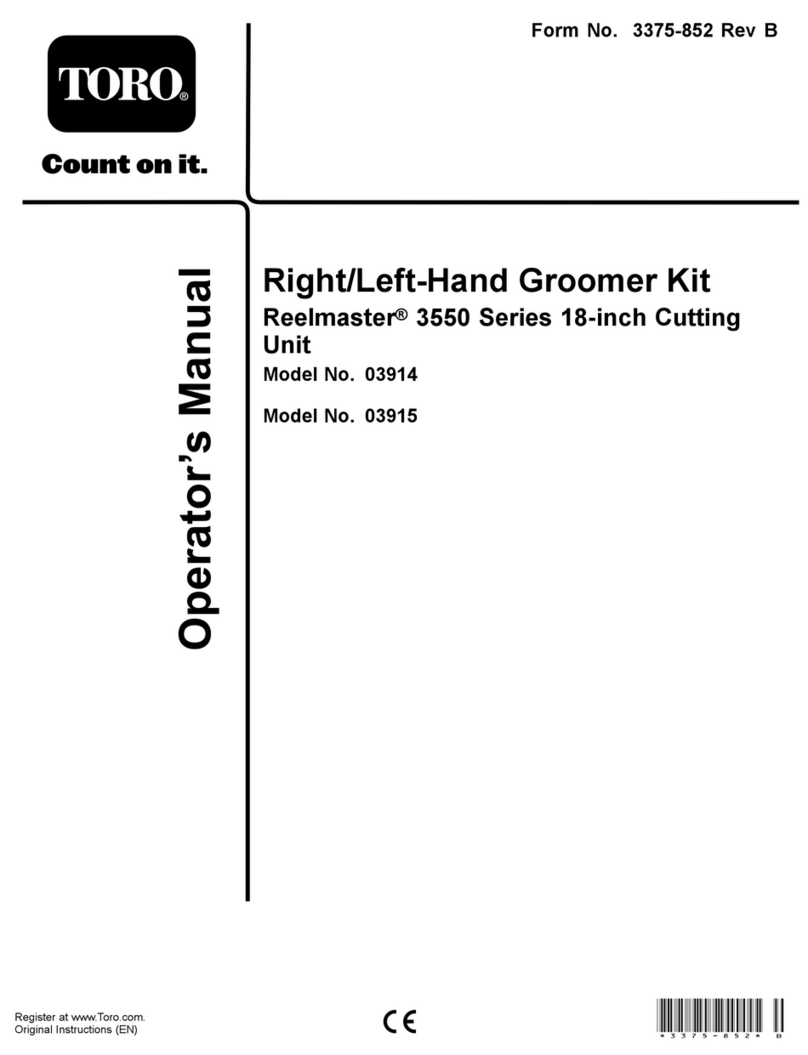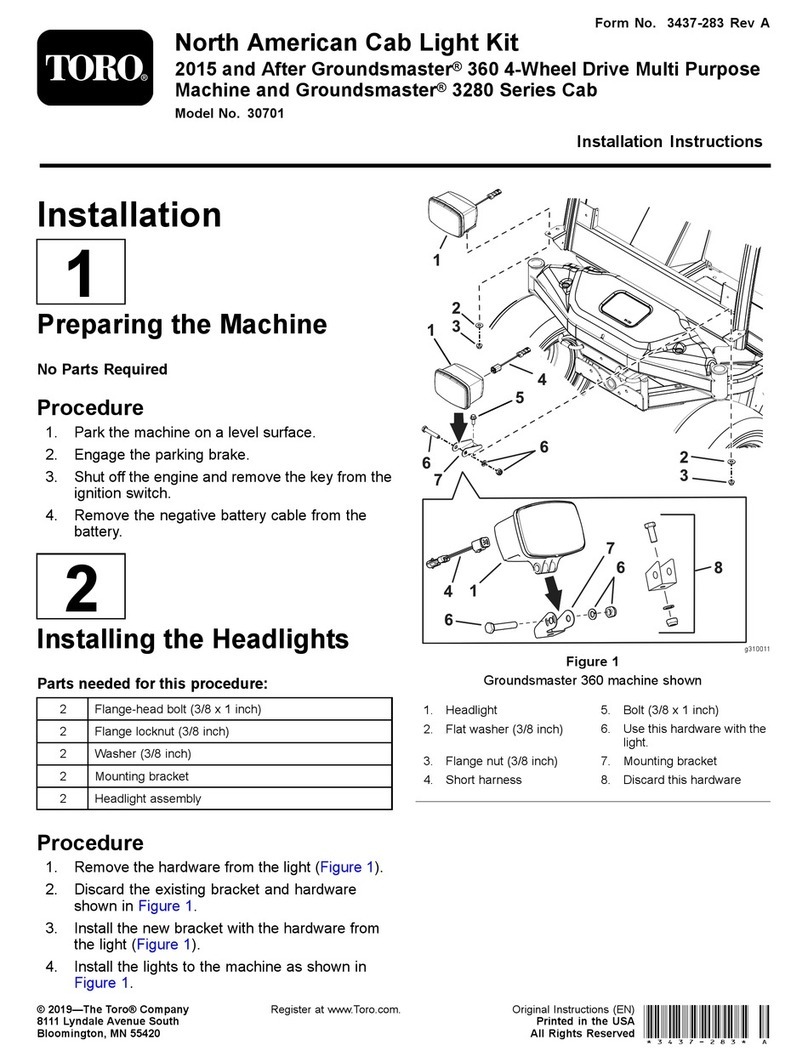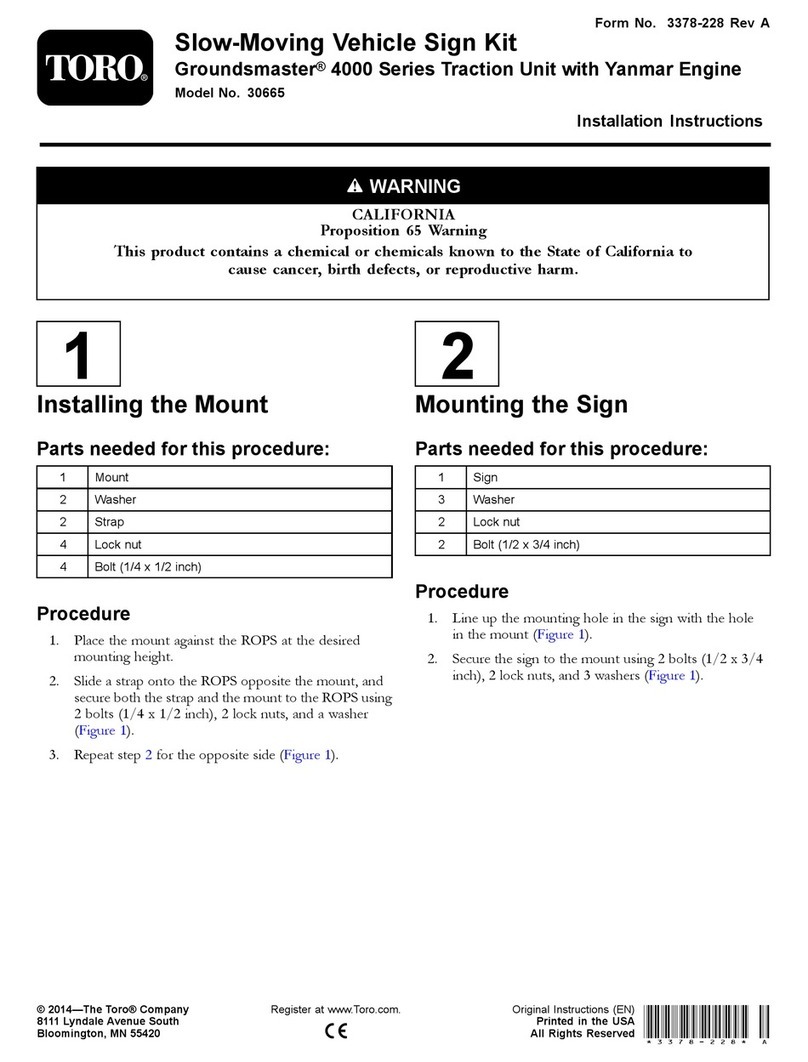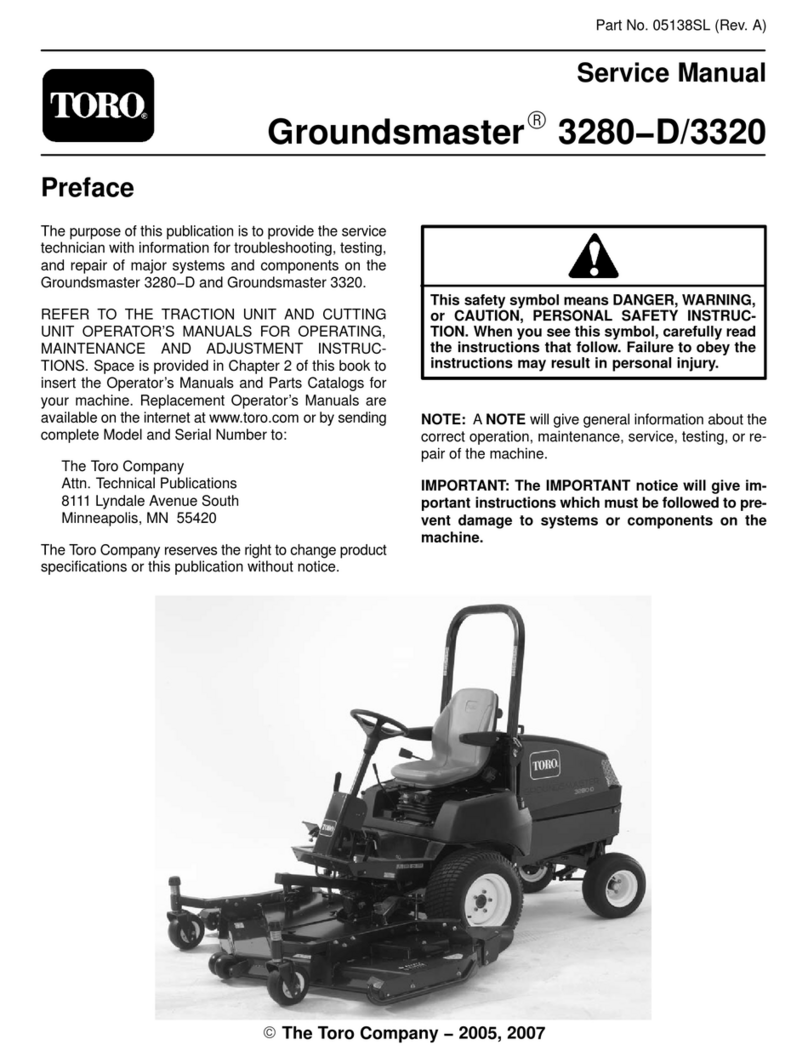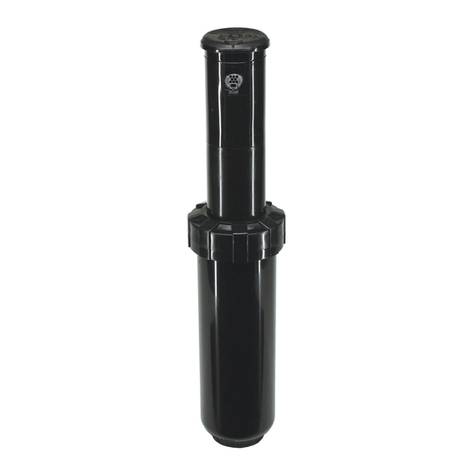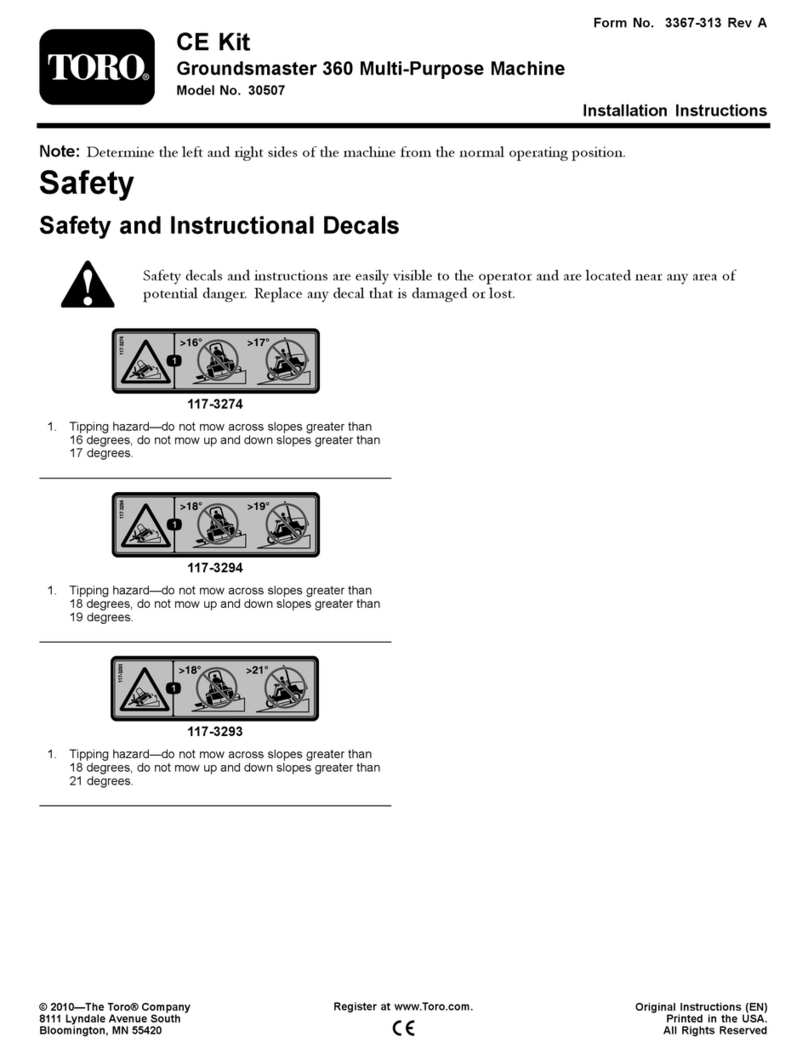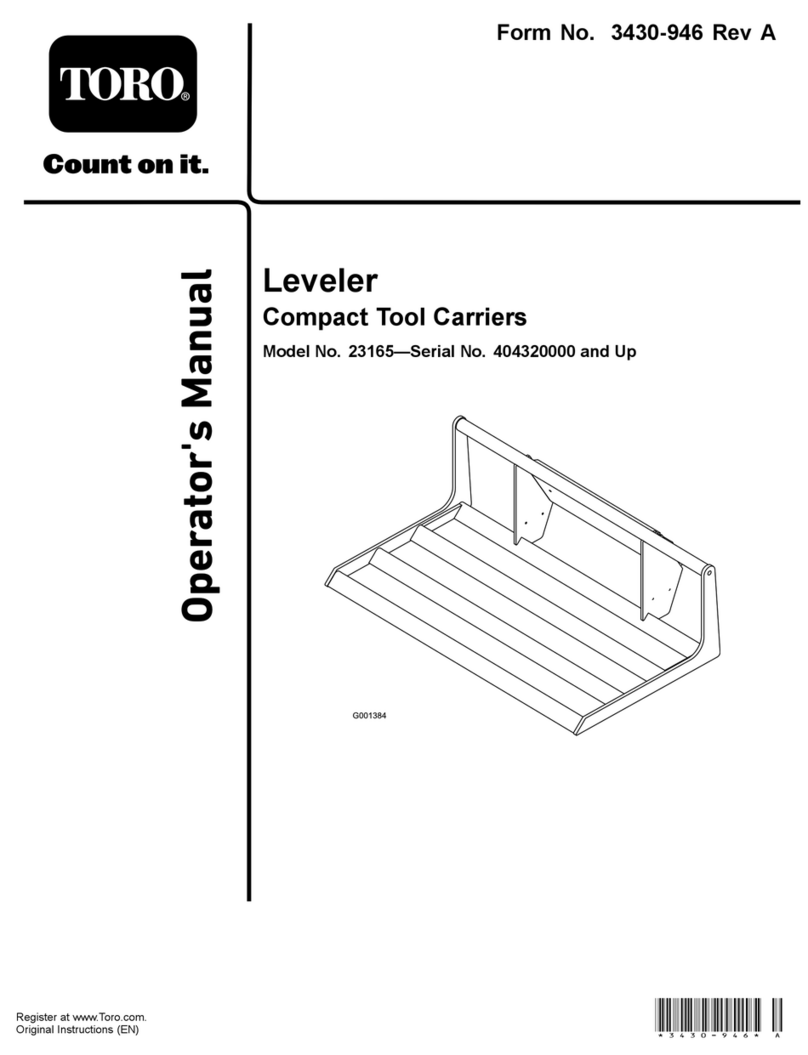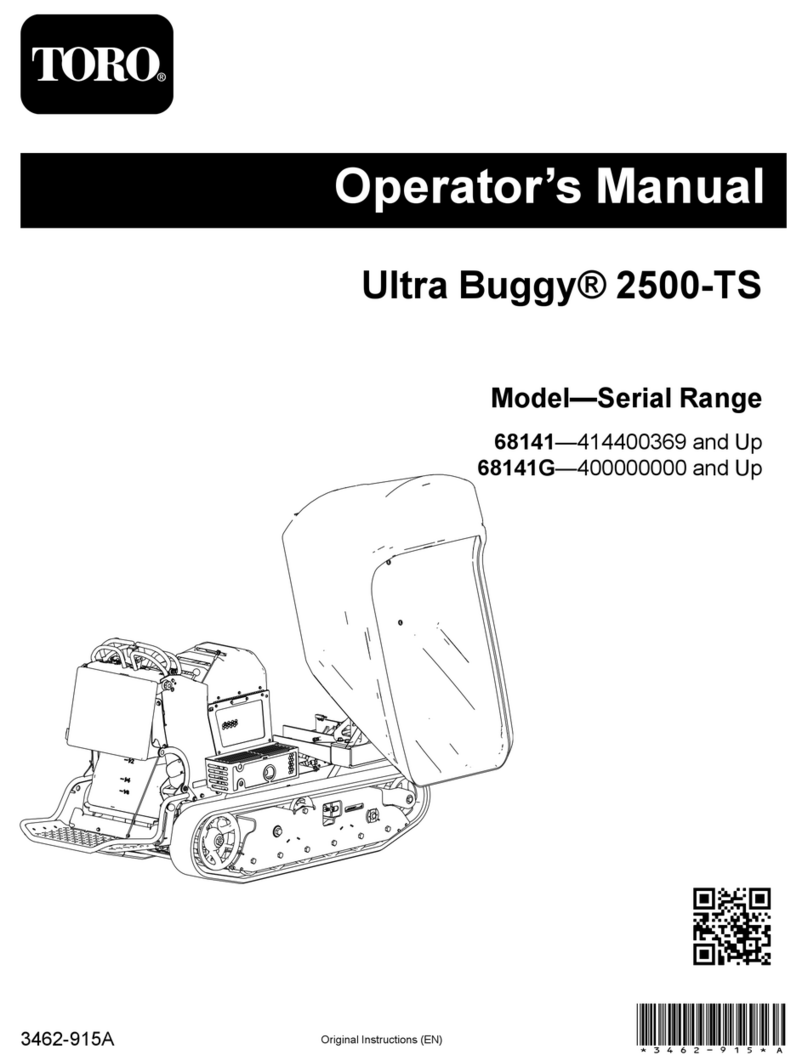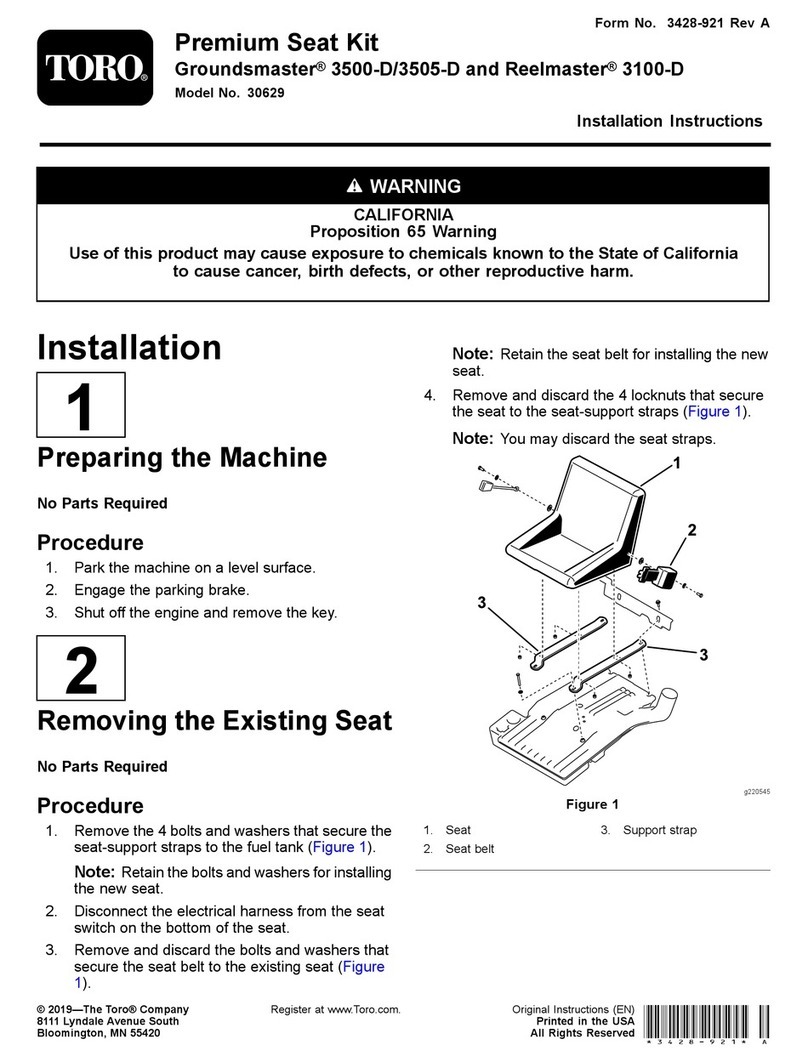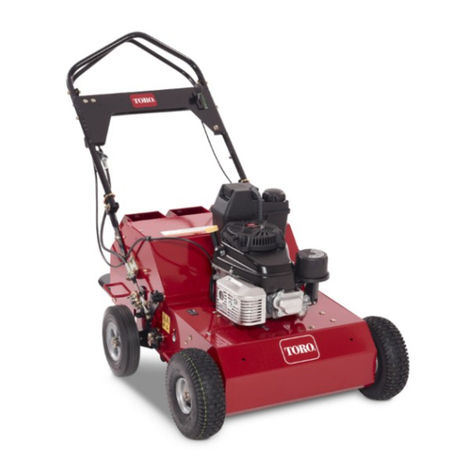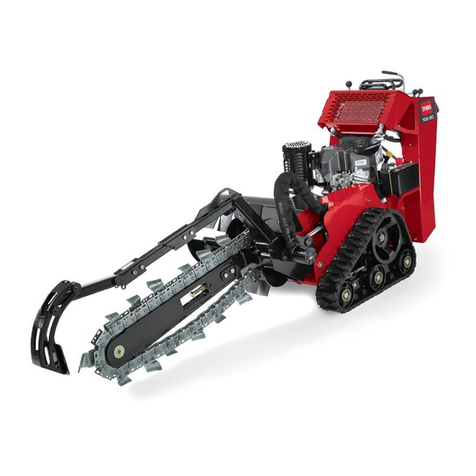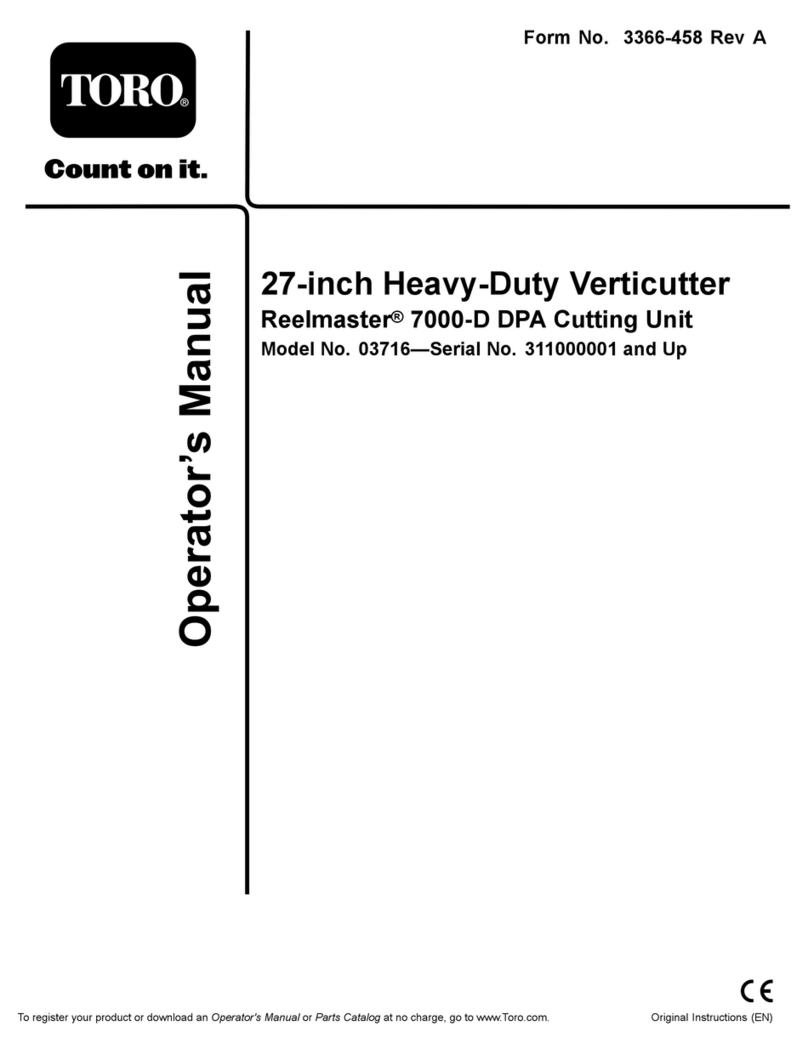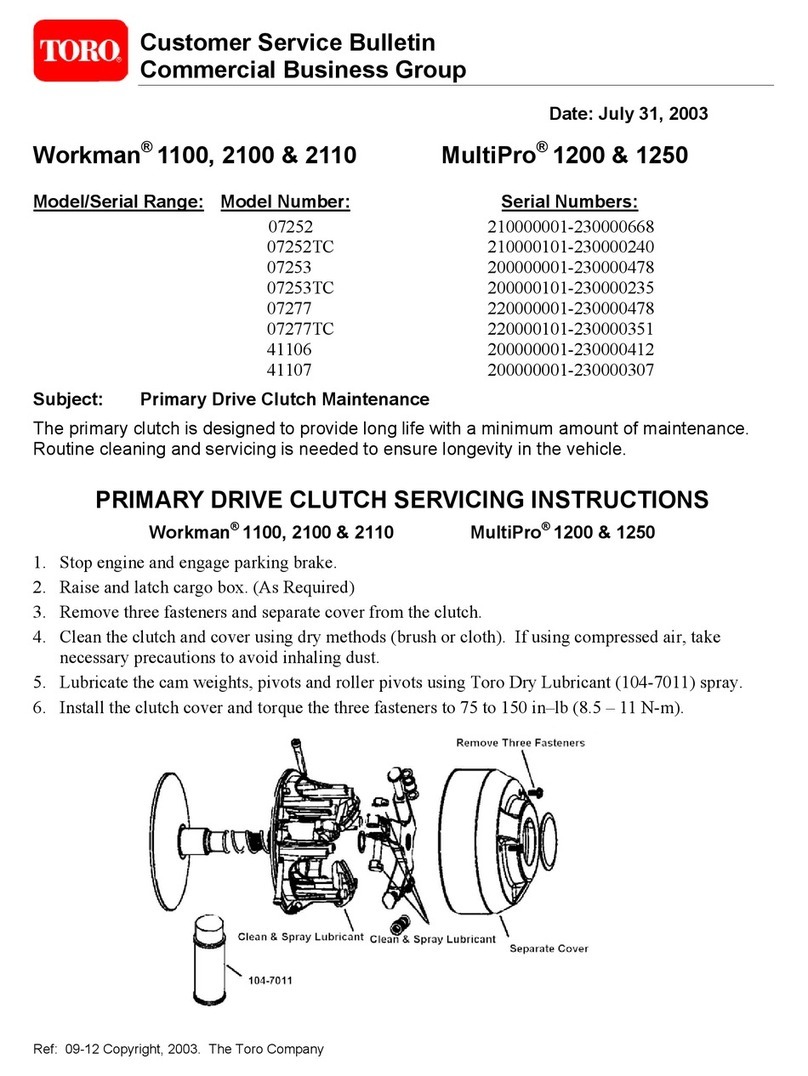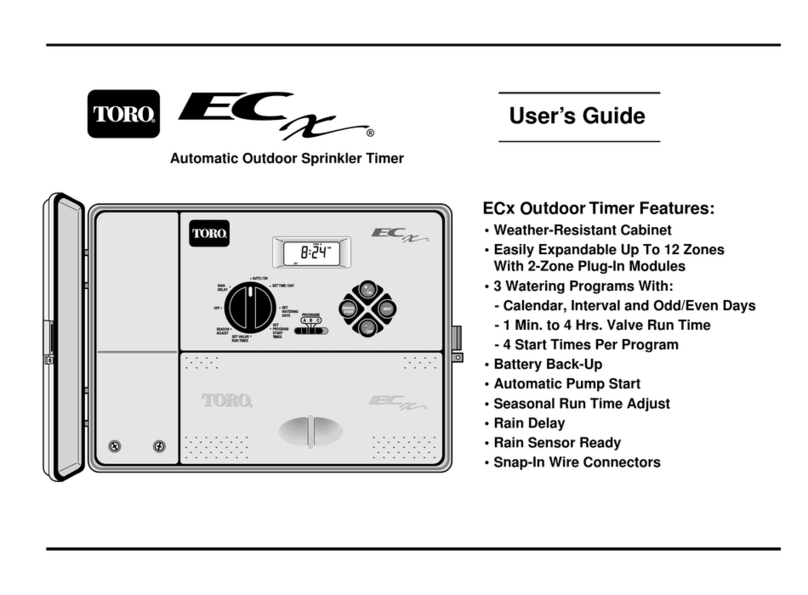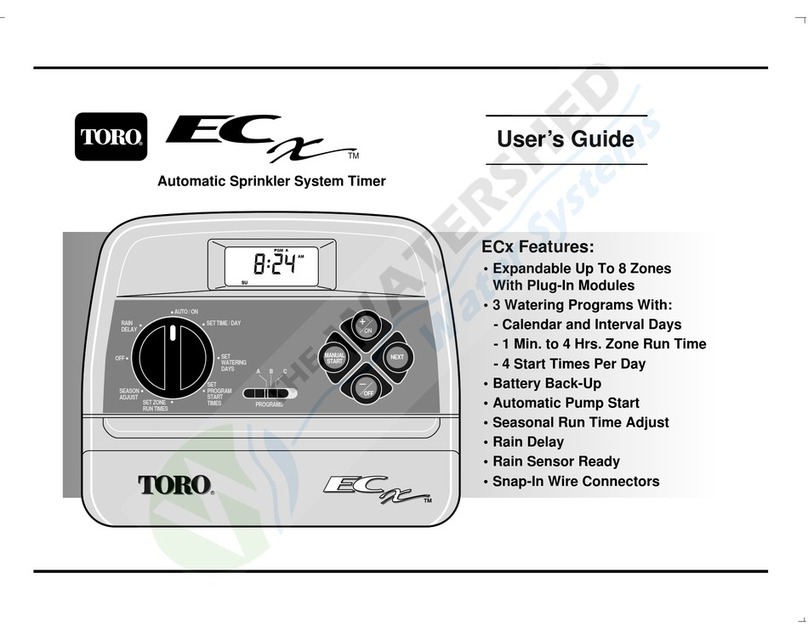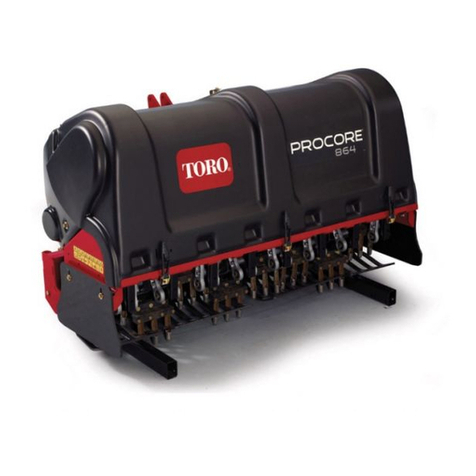
4
SAFETY INSTRUCTIONS
Improper use or maintenance of the machine can
result in injury. To reduce the potential for injury,
comply with the following safety instructions.
BEFORE OPERATING
1. Owners of this Aerator must give operators and
employees full operation and safety instructions before
allowing them to operate this machine and at least
annually thereafter. An operator who has not read and
fully understood all operating and safety instructions is
not qualified to operate this machine. Become familiar
with all controls and know how to stop quickly. A free
replacement manual is available by sending complete
Model and Serial Number to:
The Toro Company
8111 Lyndale Avenue South
Minneapolis, Minnesota 55420-1196 USA
2. Do not allow children to operate the machine. Do
not allow adults to operate the machine without proper
instruction.
3. Remove all debris or other objects that might
interfere with operation. Keep all bystanders away from
the work area.
4. Locate and mark all under ground obstructions
such as irrigation components, electrical or telephone
lines.
5. Make sure tractor is in neutral and hand brake
applied before starting. Refer to Tractor Operator's
Manual for safe starting procedures.
6. To maintain full steering control, add front end
weights to tractor. Refer to Tractor Operator's Manual
for weight requirements.
7. Keep all shields and safety devices in place. If a
shield, safety device or decal is damaged, repair or
replace it before operation is commenced. Also tighten
any loose nuts, bolts and screws to assure machine is
in safe operating condition.
8. Do not operate machine while wearing sandals,
tennis shoes, sneakers or shorts. Also, do not wear
loose fitting clothing which could get caught in moving
parts. Always wear long pants and substantial shoes.
Wearing safety glasses, safety shoes, ear protection
and a helmet is advisable and may be required by
some local ordinances and insurance regulations.
WHILE OPERATING
9. Keep all bystanders and pets away from the work
area.
10. Using the machine demands attention, and to
prevent loss of control:
A. Use only in daylight or when there is good
artificial light.
B. Watch for holes or other hidden hazards.
C. Do not transport machine close to a sand trap,
ditch, creek or other hazard.
D. Reduce speed on side hills and before making
sharp turns to prevent tipping or loss of control.
E. Look behind the aerator before backing up.
11. If the tines strike a solid object or the machine
vibrates abnormally, shut the engine off. Remove key
from ignition switch. Check aerator and traction unit for
damage. Repair any damage before restarting the
engine and operating the tines. Be sure tines are in
good condition and all bolts are tight.
12. Before leaving machine unattended, disengage
power to aerator, lower aerator and set parking brake.
Stop engine.
13. Never dismount while tractor is in motion. Never
get on or off tractor while engine is running and PTO
drive shaft is engaged. Never step over PTO shaft to
reach other side of aerator - walk around the machine.
14. Park aerator on a level surface, install rear
support/safety stand and chock roller before
disconnecting from tractor.
15. If it is necessary to probe below the soil surface,
use a non conductive material to prevent electrical
shock in case electrical wires are present.
TRANSPORTING
16. Be sure you are in compliance with all regulations
regarding transporting equipment on the public roads
and highways.
17. Ensure that all reflectors and lights required are in
place and are clean and visible by overtaking and
oncoming traffic.
18. Never allow anyone to ride on the machine during
transport.
19. Reduce speed on rough roads and surfaces.
20. Independent brakes should ALWAYS be locked
together when on the road.
PTO SHAFT
21. For all PTO shaft steel parts (tubes, bearings, joints
etc). disassembly or repairs, it is highly advisable to
contact your local Toro distributor. Removal of
components for repairs and re-assembly may
damage some parts if not carried out correctly using
special tools available in a dealer's workshop.
22. The PTO shaft should not be used without the
guards supplied, with partial protection, with damaged
guard or without the special anti-rotation chains
correctly hooked, so as to permit the maximum angle
of the PTO shaft without breaking the chains.

